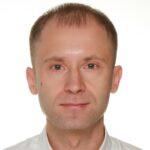Being part of the youth centre and engaging in various activities has shown me how much my actions can help the community. Small steps taken locally can lead to big changes everywhere. Our youth centre'’ main goal is to involve more young people, not just here but all over Georgia. Before I joined the youth centre, I didn’t fully understand the importance of youth participation, but now I see its value.
In the second-largest Georgian village, Martkopi, a youth centre was established to empower the local youth to drive community change. Working alongside the municipality and local organisations, they engaged young activists from different parts of rural Georgia. Through joint efforts, they crowdfunded their budget, set up events and ran campaigns, all with a clear aim: to unite the community and create a space dedicated to young people.
Participation for me means that everyone in our group has a voice in decision-making. It’s about helping young people speak up for their needs and those of their community. For example, the youth of our village led a project to have more accessible rubbish bins in our village. They collected signatures and spoke to the local government, and as a result of the campaign, we got the bins. This shows how we empower and give tools to our beneficiaries to be active citizens.
Gvantsa Tvaliashvili, the driving force behind the youth centre, explains how the project grew and its current activities.
What do you consider as the starting point of this initiative?
The idea to establish a youth centre in our village had been brewing for a while. Before the youth centre, there wasn’t an organisation where young people could come together to discuss improving our village’s environment and social life. This was something we contemplated for years.
After completing my master’s degree in Warsaw, which focused on NGOs and cross-sectoral cooperation, I returned to the village with a clearer vision and more ideas. I connected with peers I grew up with, and we all shared a common desire to create positive changes.
When you began meeting with friends to discuss improvements in the community, what issues did you identify?
One significant issue was pollution, as there was no recycling system in the village. Another concern was the lack of activities for young people after school. The typical daily schedule of young people was mostly monotonous and revolved around school and home. There were no venues like networking spaces, or clubs for them to spend time productively. They just used to gather on the streets, sitting on benches in front of houses.
What were the next steps?
We compiled a list of potential members who might be interested in founding and putting effort into making our village a better place to live. We organised a meeting in a park, and while only a fraction attended, those who did were passionate about the cause. Our discussions led us to believe that to effect real change, we needed to start with the younger generation. Our parents’ generation already had set mindsets, which were harder to alter. So, we decided to focus on the youth, believing it’s the best starting point for community transformation.
Our vision was to create a youth centre, but we knew it would require significant effort and resources. Instead of immediately working on a physical space, we began by increasing the number of young leaders. We organised various events, like cleaning campaigns and flea markets, often held outdoors or in borrowed spaces like schools or kindergartens. During this phase, young members experienced the challenges of not having a dedicated space. They had to move heavy equipment from one location to another, and the lack of shelter made events difficult, especially during unfavourable weather conditions.
We made a video for a crowdfunding initiative to highlight our struggles. Despite scepticism, especially given our community’s unfamiliarity with crowdfunding, we persisted. Our genuine need resonated with many, not just locally but nationally and internationally. People from all over, including expatriates from our village, contributed to our cause.
What were the highlights of the crowdfunding campaign for you?
We received support from migrants who had lived in our region and later moved to Canada. One of them reached out to us, asking about the remaining amount needed for our campaign. He generously offered to cover the shortfall, which was around 600 euros. This individual didn’t personally know us, but because it was his village, he felt compelled to contribute. His donation was a significant boost and it helped us reach our target.
Most of our funding came from small donations. For instance, many contributed just five laris, which is roughly equivalent to two euros. I distinctly remember the early days of our campaign when we had only collected 90 laris. One of our young leaders, Mariam, was ecstatic about this modest sum. It might seem insignificant, but to us, it was a sign that every little bit counts and that we should celebrate every milestone, no matter how small. Mariam’s excitement over the 90 laris was a poignant reminder of the value of each contribution.
Also, we had an interesting wine auction initiative. We asked our local priest, who is highly respected, to donate some of his wine. We then ran an online campaign with pictures of the wine, which was purchased by adults. The priest’s endorsement and authority made purchasing the wine even more appealing.
In total, 30% of the budget was raised through crowdfunding. Where did the other 70% come from?
The remaining 70% was funded by the Orbeliani Foundation. They were searching for innovative ideas through a competition, and our idea was selected. This initiative was part of a project aimed at empowering civil communities and promoting civic actions.
The entire crowdfunding campaign was done on a voluntary basis. We would send them invoices for items we needed for the youth centre, like laptops, furniture, printers, screens for projectors and security features like iron doors. They would then cover these costs.
Can you describe the volunteer work and how you managed the process?
We had a group of young people with great ideas for the campaign. When someone proposed an idea, they would also manage that activity. For instance, Lazare suggested a guided tour in the village, so he took charge of it. We divided tasks and responsibilities. Some managed social media, while others designed online campaigns. We asked who wanted to take on specific roles, such as designing on Canva or being a guide for village tours. Our approach was based on enthusiasm and asking volunteers what they wanted to do. The process was driven by the overarching goal of having our own space, so young leaders took the initiative to plan movie nights or flea markets independently with their peers.
What were the main challenges during the crowdfunding campaign?
Because of the pandemic-related delays, we had only 40 days to raise the funds. We were working around the clock, planning and managing everything.
Additionally, crowdfunding is a relatively new concept in Georgia, so there was a lack of familiarity with it. Many people wanted to donate but didn’t know how to transfer money online. We even had to create tutorials to guide them. Another challenge was that some people didn’t have online accounts, so we had to find ways to make the process transparent and online. The timing also coincided with exams for many, making it even more complicated.
After crowdfunding, the challenge was to finish the renovation of the room, install electricity, clean and equip it. Plus, there was no water, so we had to bring in 5-litre bottles to clean the room.
How did you engage the adults in your community?
Our young participants played a crucial role. They spoke to their teachers and parents about the campaign, which led to donations from these adults. Face-to-face conversations were effective in garnering support. Through our young members, we were able to engage the local adults and gain their trust and support.
You also collaborated with the local municipality and other organisations. How was that experience?
Dealing with the municipality was a lengthy process. It took us a year of discussions before they agreed to provide us with a space. Initially, it was challenging to get a meeting with the governor. However, once we presented our plans and intentions, they understood our non-political stance and supported us. We also collaborated with various NGOs, who were our friends and supporters. They were always willing to assist, whether it was with resources or other forms of support.
When we finished furnishing our room, we invited the local government to show them the result and discuss further cooperation. They were open to the idea and came to meet us. It was a successful meeting; afterwards, they began to support our work when needed, for instance, to organise a road closure by the police in order to organise a bike march or to help with transportation. All in all, you could say the ice has been broken, and they want to hear the youth’s voice and needs, which is solid progress.
Can you explain the recycling initiative and the youth centre’s role?
Currently, our municipality doesn’t handle recycling, so we’re the only ones collecting recyclable materials like plastic, paper and aluminium. Families gather these materials and bring them to us. If they cannot bring them, we have volunteers who can transport them by car. When we have a significant amount, like 200 kilograms of plastic, the recycling factory either comes to pick it up or we transport it to them. They pay us based on the weight and type of material. We even held a competition among our youth groups to see who could collect the most bottles for recycling. This competition motivated them to gather more bottles and spread awareness in their families and community. The collected items are then sent to the recycling factory.
What activities have already been organised in the centre, or are currently ongoing?
Creating a youth space has given us the opportunity to run local projects and engage the community in various activities.
Without the youth centre, we could not host the European Solidarity Corps volunteers. Currently, we have two French volunteers who are working to raise awareness about ecological problems in the village and make a difference. Right now, we are running the advocacy campaign: Together We Can Save Martkopi River. Within the scope of this project, we have various activities like meetings with different stakeholders of the village, workshops, interviews with locals, street art and a photo exhibition, among others.
Our youth leaders are grassroots organisers, which means they are developing future leaders who can run activities. For instance, right now, 12-year-old future leaders are organising movie nights where they sell popcorn and drinks, which also generates a small income for the movie club.
Regarding decision-making, the youth centre has a leaders’ council, which is elected by youth centre members. This council is the main decision-making body.
Now that you have successfully opened the youth centre, what are your future plans?
We’re planning to host European Solidarity Corps volunteers for the first time. Initially, we’ll have two volunteers from France, but we aim to expand this programme. Another goal is to establish a social enterprise to increase local employment opportunities for young people. One idea we’re exploring is upcycling used clothing from our community, turning them into modern outfits and selling them. The proceeds will be reinvested into our youth centre. Another idea is to open a social cafe in our village, which currently lacks such a facility. This cafe would provide job opportunities for our youth.
Project outcomes
The establishment of Martkopi youth centre has enabled the launch of local projects and community engagement through various activities. The centre’s existence is also crucial for hosting European Solidarity Corps volunteers. In terms of governance, the youth centre operates with a leaders’ council, elected by its members. This structure ensures that the centre’s activities and direction are guided by the needs and interests of the young people it serves.
Martkopi Youth Centre
About the project
Supported by:
European Solidarity Corps
Other
EU Youth Programme Priority:
Participation in Democratic Life
Sustainability, Environmental and Climate Goals
Topic:
Youth Participation / Activism and Decision Making
Youth Participation / Promoting Participation for All
Youth Participation / Skills Development and Volunteering
Youth Participation / Youth Sector Development
Youth Goals:
Visibility:
Social media was the main communication tool to involve and engage people from Georgia and beyond. We had an online campaign with posters and quotes explaining why local young people needed the youth space. Also, we recorded videos from different community spaces to show locals what it could look like if we had the same space.
Organisations involved:
Martkopi Youth Centre
Our friends and partners are: Gori Youth Centre; Sachkhere youth Centre; Umbrella; Green Squads; Let’s do it Georgia etc












